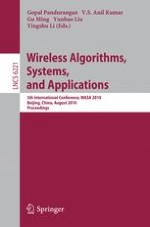2010 | Book
Wireless Algorithms, Systems, and Applications
5th International Conference, WASA 2010, Beijing, China, August 15-17, 2010. Proceedings
Editors: Gopal Pandurangan, V. S. Anil Kumar, Gu Ming, Yunhao Liu, Yingshu Li
Publisher: Springer Berlin Heidelberg
Book Series : Lecture Notes in Computer Science
